calsfoundation@cals.org
Bats
Bats belong to the class Mammalia and the order Chiroptera. There are two suborders: the Yinpterochiroptera (formerly Megachiroptera), which includes the horseshoe and Old World fruit bats (megabats), and the Yangochiroptera (formerly Microchiroptera), the remainder of bats. Worldwide, there are eighteen families, 202 genera, and more than 1,100 species of bats with only about four percent (at least forty-five species) occurring in the United States. This mammalian order is second only in number of species behind the rodents (order Rodentia). Sixteen bat species occur in Arkansas.
Much of the past research on bats in Arkansas was conducted by Michael J. (Mick) Harvey (1934–2015) of Tennessee Technical University in Cookeville. His research on several endangered bats in Arkansas was instrumental in understanding their ecology and natural history. He also authored or coauthored numerous seminal publications, including Bats of the Eastern United States (1992), Bats of the United States (1999), and Bats of the United States and Canada (2011). Another prolific bat researcher in the state was V. Rick McDaniel (1945–2009) of Arkansas State University (ASU) in Jonesboro (Craighead County). After studying and publishing on bats for thirty years, he was often referred to as the “Batman of Arkansas.”
Bats are frequently misunderstood and regularly get bad press. This may be, in part, because they have long been associated with superstitions and folklore, such as the Dracula legends. Also, the public often believes that bats pose a substantial health risk to humans by being carriers of rabies. However, that view is exaggerated and poorly grounded in scientific fact. Bats can sometimes inhabit human habitations, however, and become a nuisance. Conversely, bats do a great deal of good, because they ingest large numbers of insects. For example, gray bats (Myotis grisescens) from a colony that inhabits a cave near Batesville in Independence County have been estimated to consume over 31,751kilograms (35 tons) of insects yearly. In addition, bat feces (or guano) has long been used as fertilizer, is used in cosmetics, and was employed during the American Civil War in the making of gunpowder.
Bats are the only mammals capable of true flight, and their unique morphological features are perfectly designed for that capability. Their arm bones, particularly the fingers, are greatly elongated to support a double-layered extension of skin, which forms the flight membrane (plagiopatagium). The wing also connects with the inter-femoral membrane (uropatagium), which connects the hind legs and tail. The thumb of the front foot is short and possesses a claw, but the remaining fingers on the forearm lack claws. The hind limbs are small with backward-directed knees, and the toes are clawed. In most groups (except megabats), their eyes are very small but are functional; indeed, many bats have good eyesight. The majority of species have very prominent ears and a highly developed sense of hearing. Bats are well known for emitting high-frequency sounds and, by receiving the echoes, are able to locate and capture prey and navigate in dark caves or at night. The microbats use larynx echolocation, whereas the majority of megabats do not. One exception is the Egyptian fruit bat (Rousettus aegyptiacus), which emits clicks using its nasal passages and the back of its tongue.
Most bats are active mainly at twilight, during the night, or in early dawn before sunrise. With the use of ultrasonic acoustic bat detectors, which are devices that render ultrasonic bat clicks audible to human hearing, researchers are able to observe bat activity at night. In addition, night vision (or starlight) scopes as well as being able to fit bats with small chemical light sticks are additional aids in studying flight behavior and movements with directional antennae and radio receivers. Other techniques include digital thermal imaging (thermal-infrared cameras), motion detectors, microchips, tiny data loggers (attached directly to bats), and radiotelemetry.
Mammalogists have begun making use of more noninvasive sampling techniques designed not to injure or kill bats, such as nylon or polyester mesh mist nets used to capture bats mostly over waterways. Harp traps, another low-maintenance solution, can be set where bats are funneled into constricted spaces (cave and abandoned mine entrances, and roosts). Once collected, bats can be marked on the forearm with lipped bands (metal or plastic in a variety of colors) for later recognition. This aids in studying migration and movement patterns as well as obtaining other data about their natural history and ecology. In addition, long-term monitoring programs can determine population trends and help to verify the effectiveness of management measures.
Some bats, including several species in Arkansas, are afforded much-needed protection by federal and state agencies. Human impact is one of the biggest threats to bats. Humans’ harmful acts include habitat destruction, vandalism of hibernation and maternity sites, the building of fires in caves, and use of pesticides and other toxic chemicals. Hibernating bats are roused from sleep when disturbed by humans entering their caves and, when awakened, get nervous and unnecessarily use up winter fat reserves that are needed to support them physiologically until food is available again in the spring. Newborn bats not yet capable of flight can be dropped to their deaths by their mothers if they are disturbed in maternity colonies. Management measures including gating or fencing caves with locks, thus allowing only approved personnel access to those sites, can help. In addition, placement of interpretive/warning signs at caves to minimize human intrusion to bat nursery colonies appears to help in keeping out vandals. These signs relay the information that entering during restricted periods is a direct violation of the Federal Endangered Species Act, which is punishable by fines of up to $100,000 and/or one year in prison for each violation.
Another hazard to bats (as well as birds) is the use of wind turbines, although that is not yet a problem in Arkansas. Wind turbines have been responsible for considerable mortality of bats, and migrating bats appear to be the ones killed most often. Future research is needed to determine what impact wind farms might have on bat populations in Arkansas and should be prioritized by wildlife-management programs and energy companies thinking about implementing them.
Bats are susceptible to several communicable diseases, the most notable being rabies. However, most bats do not carry rabies, and humans who contract the disease from bats are rare in the United States; yet, the most common source of human rabies is from bats. Instances of rabies have been reported from Arkansas bats since 1961, and approximately eighteen percent of cases of animal rabies in the state are accounted for by bats. During the 1980s, an average of sixteen cases per year were reported. In addition, between 1983 and 2007, 2,566 bats were submitted to the Arkansas Department of Health for testing, and overall rabies prevalence among fourteen species of bats was ten percent infected. The latest information on bat rabies in the state noted that of sixty-three specimens of bat (ten species) tested for rabies, only three species tested positive. People in the state are much more likely to come in contact with rabid domestic animals (dogs and cats) than with infected bats. Thus, while the reported incidence of rabies is quite low, people should not handle bats that appear docile or sick.
Another disease associated with bats is histoplasmosis, caused by an airborne fungal pathogen (Histoplasma capsulatum) associated with bat guano (and bird droppings). Spelunkers should be aware of the potential risk of histoplasmosis and know how to avoid infection.
Temperate North American bats are now threatened by a fungal disease called “white-nose syndrome” (WNS). By 2018, the bat death toll from WNS had reached nearly six million, and it is still growing. The pathogen, Pseudogymnoascus destructans (Pd), grows best in cold, humid conditions that are typical of many bat hibernacula. The fungus grows on, and in some cases invades, the bodies of hibernating bats and seems to result in disturbance from hibernation, causing a debilitating loss of important metabolic resources and mass deaths. In March 2010, the Arkansas Game and Fish Commission (AGFC) closed all caves on AGFC lands and Arkansas Natural Heritage Commission (ANHC) natural areas and wildlife management areas to prevent the spread of WNS. The AGFC confirmed the presence of WNS in two northern long-eared bats (Myotis septentrionalis) found at a cave on natural-area land managed by the ANHC in Marion County. Five dead bats were found during the survey. Bats had damage to their ears, wings, and tail membranes consistent with WNS. In addition, a low level of the Pd that causes WNS was detected in two caves in northern Arkansas, including a private cave located in southern Baxter County and one at Devil’s Den State Park in Washington County. More bats infected with WNS have been found at several locations in the Ouachita Mountains and in additional sites in the Ozark Mountains. It has also been confirmed on bats in caves in Franklin and Searcy counties, and Pd has been found in abandoned mines in Garland and Polk counties. WNS has also been reported in various bats from adjacent Mississippi, Missouri, Oklahoma, Tennessee, and Texas. Research indicates that bat species that hibernate in the largest, most social groups tend to die off more quickly and may be on the road to extinction—and several bats in Arkansas fall into this category.
Two families of bats, Vespertilionidae and Molossidae, occur in Arkansas. Several species of vespertilionid bats are solely or partially threatened or endangered in a significant portion of their range as determined by the U.S. Fish and Wildlife Service (USFWS). In Arkansas, three species—M. grisescens, the Indiana bat (M. sodalis), and Ozark big-eared bat (Corynorhinus townsendi ingens)—are federally endangered, and M. septentrionalis is a threatened species. Additional species appear to be declining, particularly those that are cave-dwellers. Bats considered species of special concern by the AGFC include Rafinesque’s big-eared bat (C. rafinesquii), southeastern myotis (Myotis austroriparius), and eastern small-footed myotis (M. leibii).
The family Vespertilionidae includes sixteen genera and 100 species, and is represented in Arkansas by fifteen species within seven genera (Eptesicus, Lasiurus, Nycticeius, Perimyotis, Corynorhinus, Lasionycteris, Myotis). Other vesper bats in the state include the little brown myotis (M. lucifugus), silver-haired bat (Lasionycteris noctivagens), tri-colored bat (Perimyotis subflavus), big brown bat (Eptesicus fuscus), red bat (Lasiurus borealis), hoary bat (L. cinereus), Seminole bat (L. seminolus), and evening bat (Nycticeius humeralis). All of these bats feed primarily on insects and other arthropods, and most inhabit caves at least during part of the year. However, several live under exfoliating bark, in cracks and crevices of rocks, on cliff faces, under concrete bridges, or in man-made structures (barns, birdhouses houses, abandoned mines, wells); some also roost in trees or under leaf litter. Most have one baby per year, but some may have up to three to four.
The family Molossidae includes sixteen genera and about 100 species of bats in equatorial and temperate areas of the world. Members of this family are swift fliers and annually migrate long distances southward in late fall and winter. General characteristics of the family are the following: tail extends conspicuously beyond the free edge of the uropatagium; ears are broad, short, thick, and leathery, projecting forward over the face; small blunt tragus; and long and narrow wings. The family is represented in the state by only a single species, the Brazilian free-tailed bat (Tadarida brasiliensis), which has been reported primarily in the central and southern parts of Arkansas. These bats are insectivorous, and they are rapid, long-distance fliers. Maternity colonies, numbering from a few hundred to up to a few thousand bats, have been reported from Faulkner, Garland, and Pulaski counties. Female T. brasiliensis gives birth to a single baby from June to July; twins or even triplets are occasionally produced.
Several Arkansas bats have been the subject of parasite surveys. A number of helminth parasites, including trematodes, cestodes, and nematodes, as well as ectoparasites, such as bat flies, have been reported from several species of bats. In addition, new species of coccidian parasites (Apicomplexa) have been documented from Arkansas bats.
For additional information:
Arkansas Endangered, Threatened, Regulated, and Species of Greatest Conservation Need. Little Rock: Arkansas Game and Fish Commission, 2016.
Arnett, E. B., W. K. Brown, W. P. Erickson, J. K. Fiedler, B. L. Hamilton, T. H. Henry, A. Jain, G. D. Johnson, J. Kerns, et al. “Patterns of Bat Fatalities at Wind Energy Facilities in North America.” Journal of Wildlife Management 72 (2008): 61–78.
“Bats Found in Arkansas.” Henderson State University. http://www.hsu.edu/Academics/ARNatureTrivia/mammal-bat.html (accessed February 16, 2018).
Cryan, P. “White-Nose Syndrome Threatens the Survival of Hibernating Bats in North America.” Fort Collins Science Center, Fort Collins, Colorado: U.S. Geological Survey, 2010. http://www.fort.usgs.gov/WNS/ (accessed February 16, 2018).
Custer, Heather N. “Spring Migration Behavior and Summer Habitat Associations of Female Indiana Bats (Myotis sodalis) in Arkansas.” MS thesis, Arkansas State University, 2021.
Griffin, Crystal Ann. “Foraging Behavior of Rafinesque’s Big-Eared Bats (Corynorhinus Rafinesquii) from a Barn Colony in Rural Arkansas.” MS thesis, Arkansas State University, 2020.
Harvey, Michael J. “Protection of Endangered Gray Bat (Myotis grisescens) Colonies in Arkansas.” Proceedings of the Arkansas Academy of Science 38 (1984): 90–91. Online at http://scholarworks.uark.edu/jaas/vol38/iss1/25/ (accessed February 16, 2018).
Harvey, Michael J., J. Scott Altenbach, and Troy L. Best. Bats of the United States and Canada. Baltimore: Johns Hopkins University Press, 2011.
Harvey, Michael J., and Sam W. Barkley. “Management of the Ozark Big-Eared Bat, Plecotus townsendii ingens, in Arkansas.” Proceedings of the Arkansas Academy of Science 44 (1990): 131–132. Online at http://scholarworks.uark.edu/jaas/vol44/iss1/37/ (accessed February 16, 2018).
Harvey, Michael J., John J. Cassidy, and Gary G. O’Hagan. “Status of the Endangered Bats Myotis sodalis, M. grisescens, and Plecotus townsendii ingens in Arkansas.” Proceedings of the Arkansas Academy of Science 33 (1979): 81. Online at http://scholarworks.uark.edu/jaas/vol33/iss1/31/ (accessed February 16, 2018).
Harvey, Michael J., Michael L. Kennedy, and V. Rick McDaniel. “Status of the Endangered Ozark Big-Eared Bat (Plecotus townsendii ingens) in Arkansas.” Proceedings of the Arkansas Academy of Science 32 (1978): 89–90. Online at http://scholarworks.uark.edu/jaas/vol32/iss1/31/ (accessed February 16, 2018).
Heidt, Gary A. “Reported Animal Rabies in Arkansas: 1950–1981.” Proceedings of the Arkansas Academy of Science 36 (1982): 34–37. Online at http://scholarworks.uark.edu/jaas/vol36/iss1/12/ (accessed February 16, 2018).
Heidt, Gary A., David A. Saugey, Laura Chandler, and Karen D. Stone. “Reported Animal Rabies in Arkansas: 1982–1990.” Proceedings of the Arkansas Academy of Science 45 (1991): 41–45. Online at http://scholarworks.uark.edu/jaas/vol36/iss1/12/ (accessed February 16, 2018).
Heidt, Gary A., David A. Saugey, and S. Bradford-Luck. “Reported Bat Rabies in Arkansas.” Proceedings of the Arkansas Academy of Science 41 (1987): 105–106. Online at http://scholarworks.uark.edu/jaas/vol41/iss1/ (accessed February 16, 2018).
Horn, J., E. B. Arnett, and Thomas H. Kunz. “Behavioral Responses of Bats to Operating Wind Turbines.” Journal of Wildlife Management 72 (2008): 123–132.
Kearny, Valerie M., Roger W. Perry, Thomas S. Risch, and Virginie Rolland. “Distribution and Roost Site Selection of Eastern Small-Footed Bats (Myotis leibii) in Mountains of West-Central Arkansas.” 21.2 (2022): 74–92.
Ketzler, Lorraine P., Christopher E. Comer, and Daniel J. Twedt. “Bat Community Response to Silvicultural Treatments in Bottomland Hardwood Forests Managed for Wildlife in the Mississippi Alluvial Valley.” Forest Ecology and Management 417 (May 2018): 40–48. Online at https://www.researchgate.net/publication/323724754_Bat_community_response_to_silvicultural_treatments_in_bottomland_hardwood_forests_managed_for_wildlife_in_the_Mississippi_Alluvial_Valley (accessed October 13, 2020).
Martin, Sarah M. “Determination of Bat Species’ Use of Artificial Bark Enhanced Habitat at Select Sites in North and Central Arkansas.” MS thesis, University of Central Arkansas, 2021.
McAllister, Chris T., Charles R. Bursey, and Angela D. Burns. “Gastrointestinal Helminths of Rafinesque’s Big-Eared Bat, Corynorhinus rafinesquii (Chiroptera: Vespertilionidae), from Southwestern Arkansas, U.S.A.” Comparative Parasitology 72 (2005): 121–123.
McAllister, Chris T., Charles R. Bursey, and Nixon Wilson. “Parasites of the Brazilian Free-Tailed Bat, Tadarida brasiliensis (Chiroptera: Molossidae), from Southwestern Arkansas.” Texas Journal of Science 58 (2006): 87–92.
McAllister, Chris T., Charles R. Bursey, and Henry W. Robison. “A New Host and Three New Geographic Distribution Records for Trematodes (Digenea: Lecithodendriidae) from the Eastern Pipistrelle, Perimyotis subflavus (Chiroptera: Vespertilionidae), in Arkansas, U.S.A.” Comparative Parasitology 78 (2011): 193–199.
McAllister, C. T., Scott Burt, R. Scott Seville, and Henry W. Robison. “A New Species of Eimeria (Apicomplexa: Eimeriidae) from the Eastern Pipistrelle, Perimyotis subflavus (Chiroptera: Vespertilionidae), in Arkansas.” Journal of Parasitology 97 (2011): 868–898.
McAllister, Chris T., R. Scott Seville, Robert Arlen, and Matthew B. Connior. “A New Species of Eimeria (Apicomplexa: Eimeriidae) from Tri-Colored Bats, Perimyotis subflavus (Chiroptera: Vespertilionidae), from the Ouachitas of Arkansas.” Acta Parasitologica 59 (2014): 690–693.
McAllister, Chris T., R. Scott Seville, and Charles R. Bursey. “Helminth (Cestoda, Nematoda) and Coccidian (Apicomplexa: Eimeriidae) Parasites of the Eastern Small-Footed Myotis, Myotis leibii (Chiroptera: Vespertilionidae) from Arkansas, with a Description of a New Species of Eimeria.” Acta Parasitologica (2017): 377–381.
McAllister, Chris T., Zachary D. Ramsey, and Nancy E. Solley. “Noteworthy Records of the Seminole Bat, Lasiurus seminolus (Chiroptera: Vespertilionidae), from Southwestern Arkansas and Northeastern Texas.” Journal of the Arkansas Academy of Science 58 (2004): 137–138. Online at http://scholarworks.uark.edu/jaas/vol58/iss1/25/ (accessed February 16, 2018).
McAllister, C. T., and Steve J. Upton. “Two New Species of Eimeria (Apicomplexa:Eimeriidae) from Eastern Red Bats, Lasiurus borealis (Chiroptera: Vespertilionidae), in Arkansas and North Carolina.” Journal of Parasitology 95 (2009): 991–993.
McAllister, Chris T., Steve J. Upton, and Charles R. Bursey. “Parasites (Coccidia, Trematoda, Nematoda) from Selected Bats from Arkansas.” Journal of the Arkansas Academy of Science 58 (2004): 133–136. Online at http://scholarworks.uark.edu/jaas/vol58/iss1/24/ (accessed February 16, 2018).
McChesney, T. C., H. Spatz, and M. Edelman. “Bat Rabies in Arkansas.” Journal of the Arkansas Medical Society 80 (1983): 181–185.
McDaniel, V. Rick, Michael J. Harvey, Renn Tumlison, and Ken Paige. “Status of the Small-Footed Bat, Myotis leibii, in the Southern Ozarks.” Proceedings of the Arkansas Academy of Science 36 (1982): 92–94. Online at http://scholarworks.uark.edu/jaas/vol36/iss1/32/ (accessed February 16, 2018).
Moore, Patrick Ryan. “Home Range and Habitat Use of Foraging Gray Bats (Myotis Grisenscens) from Five Maternity Sites in Northern Arkansas.” MS thesis, Arkansas State University, 2016. Online at https://sbdn.org/wp-content/uploads/2020/02/Patrick-Moore-Masters-Thesis-Final-Version.pdf (accessed October 13, 2020).
Perry, R. W., and R. E. Thill. “Summer Roosting by Adult Male Seminole Bats in the Ouachita Mountains, Arkansas.” American Midland Naturalist 158 (2007): 361–368.
Porter, Tyler Joseph. “Inventory, Abundance, and Habitat Selection of Chiropterans and Felsenthal National Wildlife Refuge in Southeast Arkansas.” MS thesis, University of Louisiana at Monroe, 2017.
Sasse, D. Blake. “Human Rabies Post-Exposure Treatment in Arkansas, 1994–2000.” Journal of the Arkansas Academy of Science 58 (2004): 95–99. Online at http://scholarworks.uark.edu/jaas/vol58/iss1/17/ (accessed February 16, 2018).
Sasse, D. Blake, Chris T. McAllister, and Lance A. Durden. “A New Host Record for the Bat Bug, Cimex adjunctus (Hexapoda: Hemiptera) from Eastern Small-Footed Myotis, Myotis leibii (Chiroptera: Vespertilionidae), in Arkansas.” Journal of the Arkansas Academy of Science 70 (2016): 287–288. Online at http://scholarworks.uark.edu/jaas/vol70/iss1/50/ (accessed February 16, 2018).
Sasse, D., and David Saugey. “Rabies Prevalence Among and New Distribution Records of Arkansas Bats.” Journal of the Arkansas Academy of Science 62 (2008): 159–160. Online at http://scholarworks.uark.edu/jaas/vol62/iss1/ (accessed February 16, 2018).
Scherman, Stacy Jae. “Fall and Winter Roosting Ecology of Southeastern Myotis and Rafinesque’s Big-Eared Bats in the Cache River National Wildlife Refuse.” MS thesis, Arkansas State University, 2019.
Sealander, John A., and Gary L. Heidt. Arkansas Mammals: Their Natural History, Classification, and Distribution. Fayetteville: University of Arkansas Press, 1990.
Spitz, Benjamin Nicholas. “Ecological Physiology of Rafinesque’s Big-Eared Bats (Corynorhinus rafinesquii) Roosting in an Anthropogenic Structure in Arkansas.” MS thesis, Arkansas State University, 2020.
Tumlison, Renn, Matthew B. Connior, Henry W. Robison, Chris T. McAllister, Lance A. Durden, D. Blake Sasse, and David A. Saugey. “Vertebrate Natural History Notes from Arkansas, 2015.” Journal of the Arkansas Academy of Science 69 (2015): 106–115. Online at http://scholarworks.uark.edu/jaas/vol69/iss1/21/ (accessed February 16, 2018).
Chris T. McAllister
Eastern Oklahoma State College

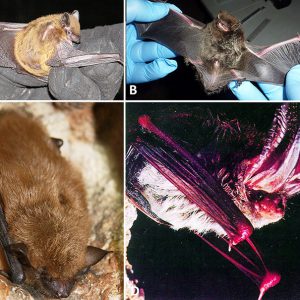 Arkansas Bats
Arkansas Bats 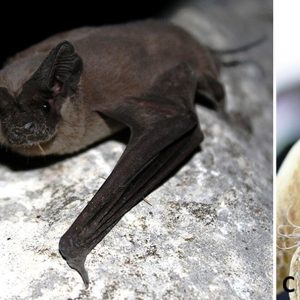 Arkansas Bats
Arkansas Bats 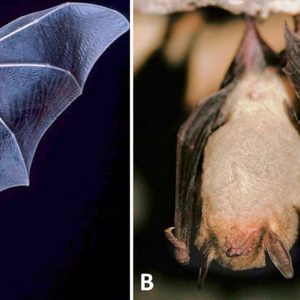 Endangered Arkansas Bats
Endangered Arkansas Bats  Foushee Cave Natural Area
Foushee Cave Natural Area  Garrett Hollow Natural Area
Garrett Hollow Natural Area 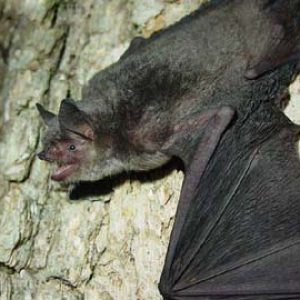 Gray Bat
Gray Bat 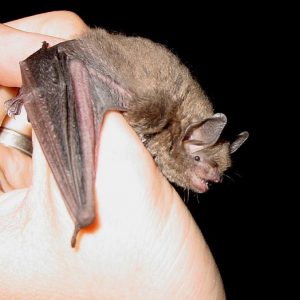 Indiana Bat
Indiana Bat 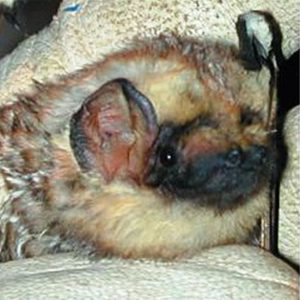 Lasiurus Bats
Lasiurus Bats 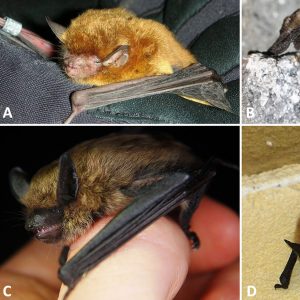 Myotis Bats
Myotis Bats 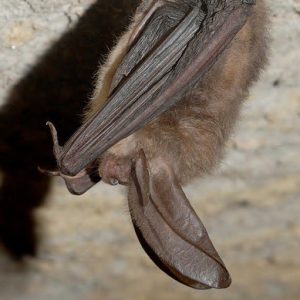 Ozark Big-Eared Bat
Ozark Big-Eared Bat 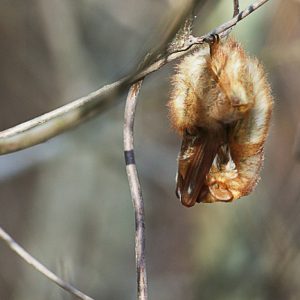 Red Bat
Red Bat  Slippery Hollow Natural Area
Slippery Hollow Natural Area 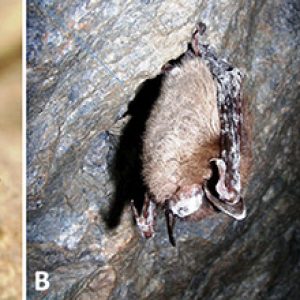 White Nose Syndrome
White Nose Syndrome  WNS Affected Areas
WNS Affected Areas 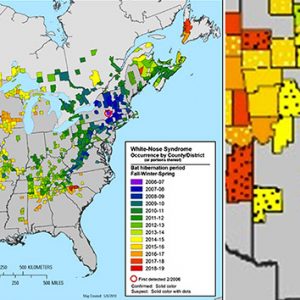 WNS Occurrence
WNS Occurrence 



Comments
No comments on this entry yet.